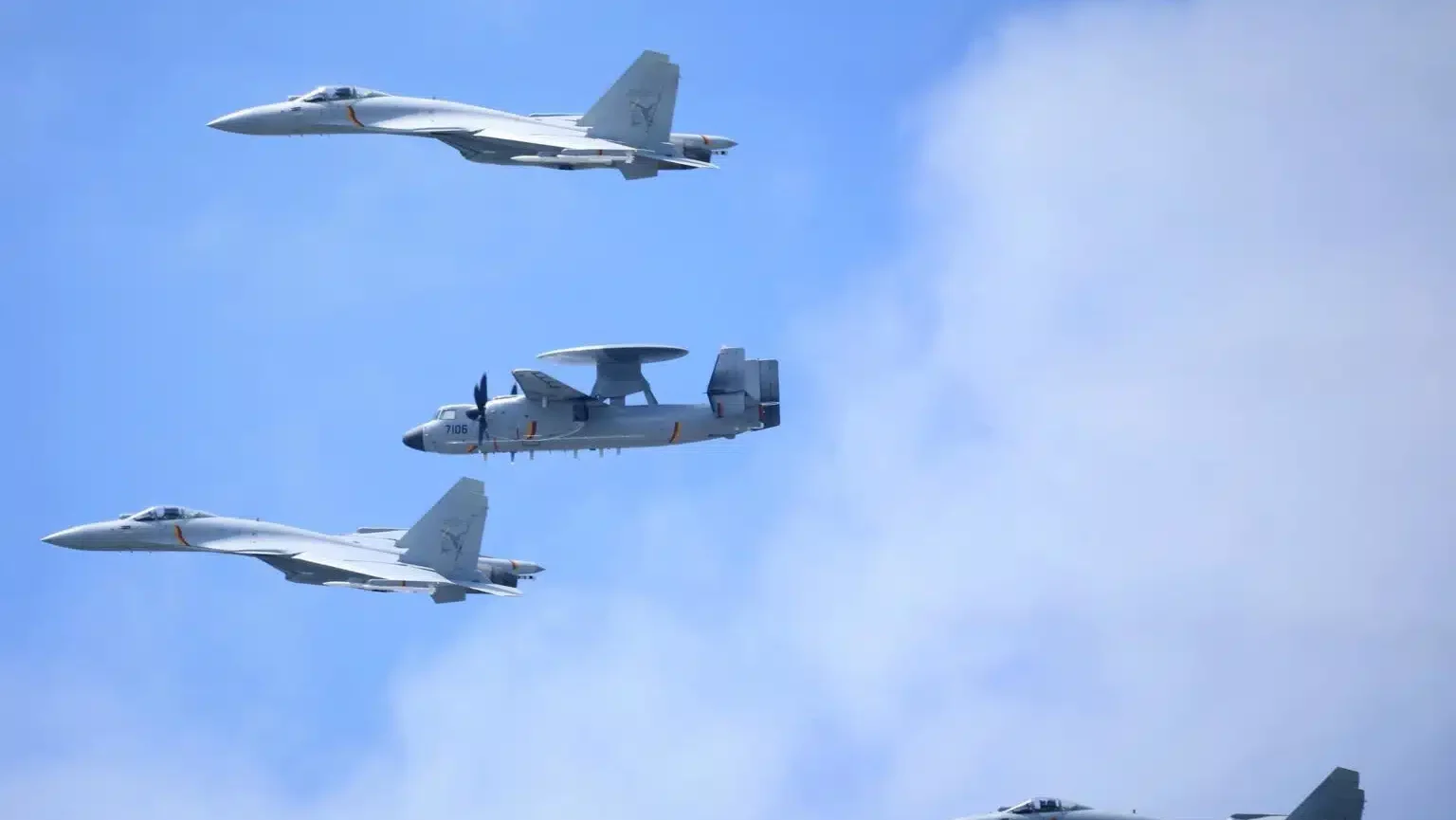Shanghai, 2025 – China’s carrier aviation program is marking a decisive phase in 2025, with the commissioning of its first supercarrier Fujian (18) drawing closer. For over two decades, the People’s Liberation Army Navy (PLAN) has built its carrier fleet from the Liaoning (16) and Shandong (17) towards a new generation of platforms and aircraft designed for power projection in the Asia-Pacific.
The centerpiece of this transformation lies in the Fujian, the first Chinese carrier equipped with electromagnetic catapults. This capability enables the PLAN to field heavier, more advanced aircraft, positioning China closer to the operational profile long dominated by the United States Navy. Central to this airwing are the J-15T, J-15DT, and the fifth-generation J-35 stealth fighter, alongside the new KJ-600 airborne early warning and control aircraft.
The J-15T, developed by Shenyang Aircraft Corporation, represents the culmination of China’s Flanker-based designs adapted for catapult launches. Already operational in trials aboard Liaoning and Shandong, the J-15T is set to expand interoperability across carriers, offering greater combat range and payload. A parallel development, the J-15DT, adds electronic warfare capabilities, underscoring China’s focus on information dominance in naval warfare.
Equally significant is the arrival of the J-35. Evolving from the FC-31 prototype, the J-35 brings stealth, folding wings, and advanced avionics to carrier decks. While Fujian is expected to be its primary platform, early mockups on Liaoning suggest China may also integrate it into its STOBAR carriers, accelerating its entry into service. The J-35 is increasingly viewed as the long-term replacement for Flanker derivatives, signaling a generational leap in naval combat aviation.
Complementing these combat assets is the KJ-600, China’s first dedicated carrier-based airborne early warning platform. Closely resembling the American E-2 Hawkeye, the KJ-600 enhances situational awareness and battle management for the PLAN. Though still in pre-production phases, its induction would mark a critical step toward fully networked carrier operations, offering command-and-control capabilities previously unavailable to Chinese fleets.
China is also investing in training and support systems, notably the development of a carrier-capable JL-10 variant. This adaptation highlights Beijing’s recognition that sustaining an advanced carrier force requires not only front-line fighters but also effective training infrastructure. Emerging designs such as the JL-15 suggest continued experimentation with configurations tailored for carrier operations.
Looking ahead, the trajectory of Chinese naval aviation points toward even greater innovation. Speculation surrounds next-generation fighters like the J-XDS, alongside carrier-based unmanned aerial vehicles for combat and support roles. The ongoing construction of the Type 076 amphibious assault ship, equipped with electromagnetic catapults, signals a broader vision in which uncrewed systems complement traditional carrier airwings.
As 2025 unfolds, China’s advances in carrier aviation will reverberate across the Asia-Pacific. With Fujian nearing operational status and new aircraft entering service, the PLAN is positioning itself as a formidable maritime power capable of shaping regional security dynamics for decades to come.









